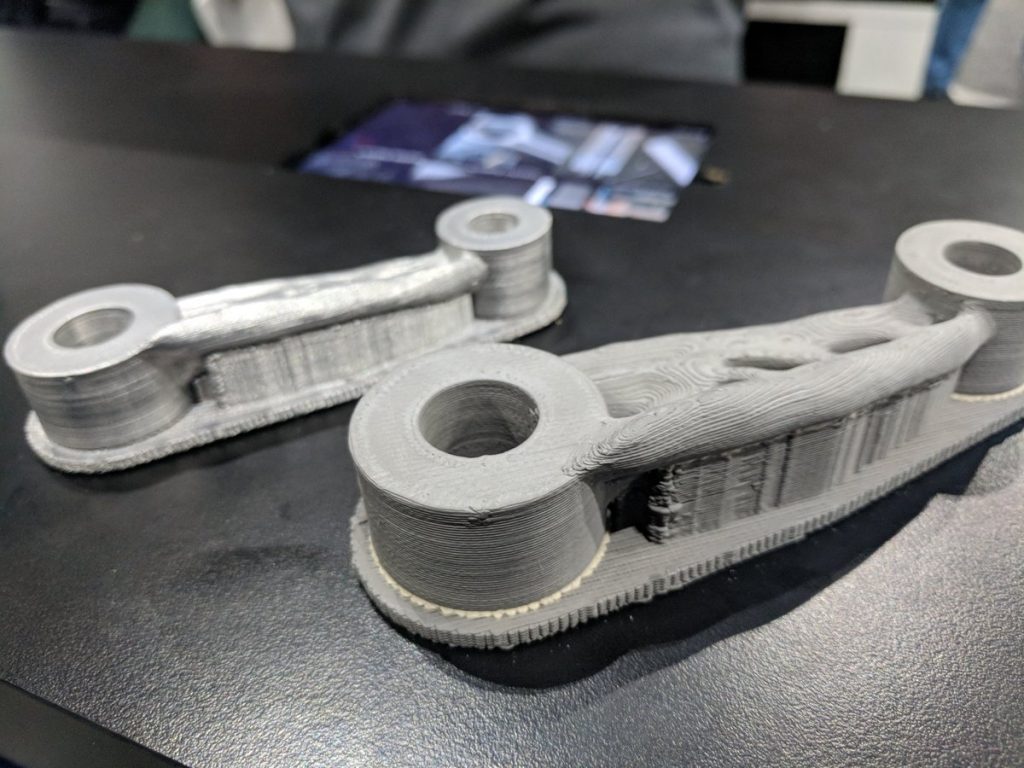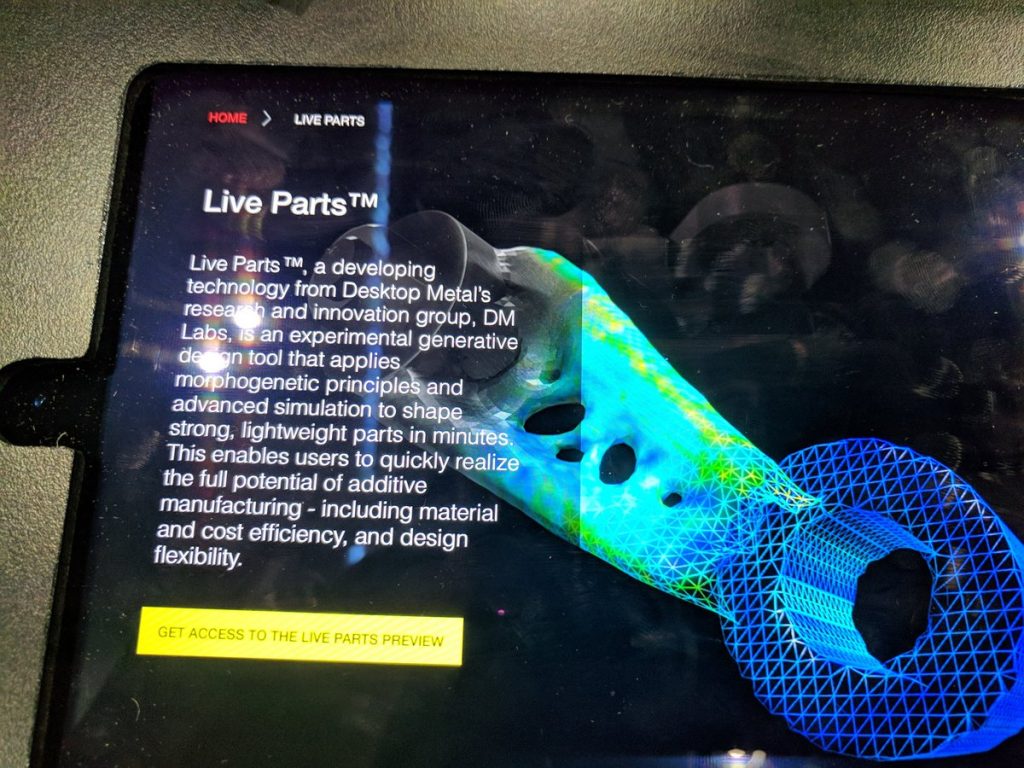Award winning metal 3D printer developer Desktop Metal has announced Live Parts, a new generative design platform to help customers get the most out of additive manufacturing.
Instead of working with known shapes or objects, Live Parts 3D software takes a more organic approach, and 3D models are “grown” from a set of predetermined factors, such as size, purpose and weight.
The program has been made in collaboration with Dassault Systèmes, and premiered at this week’s SOLIDWORKS World event in LA.

Biomimicry in design for additive manufacturing
A “Generative design approach”, as defined by professor and architect Celestino Soddu, one of the method’s pioneers, “works in imitation of Nature, performing ideas as codes, able to generate endless variations.” The concept sprang out of software engineering in the 1980s, yet it wasn’t until 3D printing that generative design found its perfect manufacturing partner.
With conventional methods such as CNC milling or injection molding, it would be impossible to manufacture some of the complex geometries made using generative design.

“It’s a totally different approach to the way things are created, because it’s not generating many different designs randomly,” explains Live Parts inventor Andy Roberts, “instead it’s creating a design by developing it from a seed cell into an organism and its optimized for its environment.”
The program is capable of automatically designing a part fit-for-process which is strong, lightweight and resistant to fatigue.
3D printed parts “from the ground up”
The concept is similar to topology optimization, a design trope that has been around in additive manufacturing for some time. This is because parts can be designed with a set of parameters surrounding stresses imposed on the part in real-world use.
For example, if making a lever, the majority of stress experienced by the part will be located into the direction it is pushed. The lever therefore doesn’t need to be as strong under a force from above. Live Parts gives users the tools necessary to build parts especially for purpose, rather than working with a set of preconceived ideas.

Desktop Metal CTO Jonah Myerberg explains, “We were finding that our customers were coming to us with all of these great ideas and concepts, but starting with parts that they wanted to print that were in fact designed for alternative manufacturing technologies. And so we wanted to make it easier.
“We wanted to give the designer a tool, that they could use to redesign their parts, or to design their parts from the ground up, for additive manufacturing, and for functionality.”
Coming soon
Still in its development stages, Desktop Metal has requested feedback on user experience of Live Parts.
An test version of the program is now available exclusively to SOLIDWORKS users.
Desktop Metal also has a number of other projects in the pipeline with Dassault Systèmes that will undoubtedly be revealed throughout the year. End-to-end optimization of the 3D printing process is one their live projects, along with educational initiatives and certification.
For more of the latest news and releases subscribe to the most widely read newsletter in the industry here, like 3D Printing Industry on Facebook and follow us on Twitter.
Make your nominations for 3D Software of the Year in the 2018 3D Printing Industry Awards now.
Featured image shows a design “growing” in Live Parts generative design. Clip via Desktop Metal



